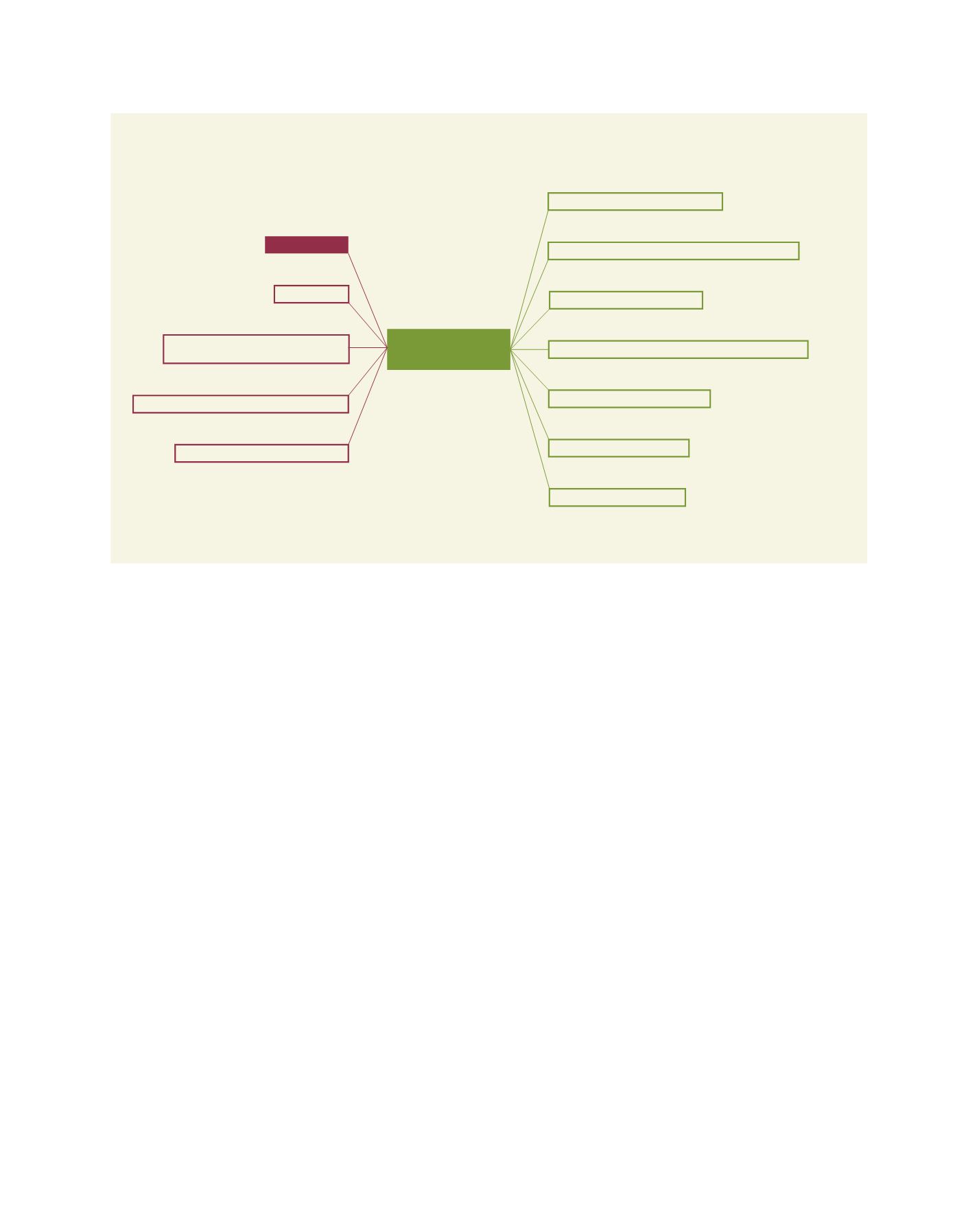

[
] 25
all arable land in 11 countries is rain-fed. In Sudan and Yemen up
to 80 per cent of cereal production is rain-fed. The United Nations
Intergovernmental Panel on Climate Change highlights that the
region will become drier and hotter with the possibility of rainfall
decreasing by 10 per cent by 2050.
25
Increased water scarcity will
result from reduction in groundwater resources that, together with
climate warming, under existing patterns of distribution and use
will lead to crop losses, especially for small farmers.
Agricultural strategy rather than absolute scarcity has accel-
erated an environmental and water crisis made more acute by
climate change. The oil-fuel-water-agriculture nexus: cheap
regional energy (most of which is used to drive air condi-
tioning units
26
) quickened the use of new drilling techniques
and capital intensification of farming for increased export-led
growth rather than the production of local staples. Drilling
deeper and deeper wells and accessing groundwater and aqui-
fers while not giving these sources time to recharge has mined
the region’s scarcest resource and limited its social distribu-
tion. The impact of global warming and rising sea levels is
debated alongside constraints on water availability.
27
It is
clear that resource availability is shaped by the distribution
of resources and the political forces that shape that. It is there-
fore somewhat surprising to read from a recent report that
“radical departures are not warranted nor feasible.”
28
Farmer voices, recommendations and a research agenda?
FAO has stressed the need to integrate and support farmers
by increasing investment and financing “that directly favour
family farmers.”
29
FAO has called for increasing the share of
value-added that accrues directly for family farmers, improv-
ing access to land, supporting women and youth and helping
family farmers manage climate change. To do this, FAO
stresses improving producer organizations and civil society
representative organs to expand efficiency and for govern-
ments to establish legal frameworks to help family farming.
This important action list needs to be located in the region’s
patterns of existing governance. Family farmers have to be
consulted about agricultural policy, and policies formulated
to raise rural incomes in support of family farming have been
pursued in the context of conflict, economic liberalization and
climate change. There have been only rare examples of viewing
the difficulties faced by family farming holistically; a view that
is needed to address structural concerns over resource access
and how inequality is reproduced. Non-governmental organ-
izations, for example, may address issues of climate, water
access and gender inequality but are seldom able to persuade
governments to tackle policy failures that link sectoral issues
with broader-based concerns of social differentiation. Policy
reform has taken place in the context of enhanced internation-
alization of the food regime where family farming continues
to be adversely impacted by agribusiness and international
trade arrangements in grain and other agricultural products.
Family farming needs to be recognized as important and
integral to development. That means valorizing local farming
knowledge and techniques and penalizing the actions of inves-
tors and speculators who may take land and other resources out
of production in terms of food and use values. Future research
agendas will need to explain relationships of power that have
impacted adversely on family farming, where the production
and distribution shortfalls occur, why and with what kinds of
social consequences. In other words, research and policy inter-
vention will need to be
dynamic
and
differentiated.
Family farming constraints and possibilities
Source: FAO
Impediments to Family Farming
Counter Strategies
Family Farming
Collective Farming/Coping Strategies
Intensification of Labour Process
Village Organization; Cooperatives/Social Mobilization
Pluriactivity ON/OFF Farm Income
Improved and Cheaper Credit
Alternative Cropping Patterns
Intensification of Women’s (and Child) Domestic Labour
War and Conflict
Global Pressures of Dumping,
Trade Liberalization, Non-Tariff Reforms
Local Markets
Input Prices, Merchant/Trader Prices
Local Transport Infrastructure Links and Costs
R
egional
P
erspectives
















